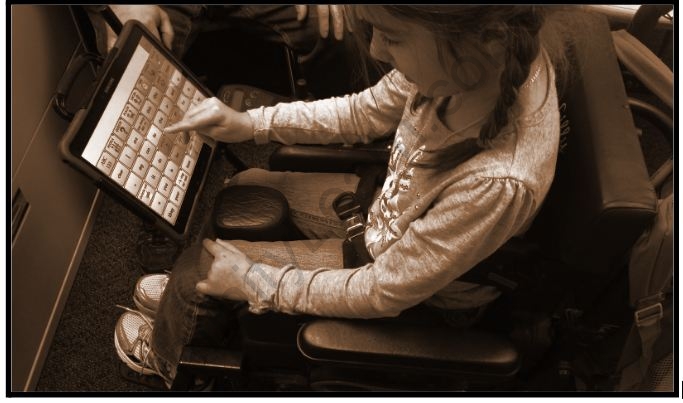Table of Contents
Introduction
Each student is unique. They all learn in various ways and require varying lengths of time to understand topics. Our instructors, on the other hand, don’t always get it. They’d dismiss us and label us as slackers. Always keep in mind that the education of Specially Abled Children is the duty of everyone.
To put it another way, they’d prefer their pupils don’t comprehend an idea than waste time teaching it again. That is one of our educational system’s major flaws. Students tend to question themselves and feel inferior to their peers as a result of this. As a result, students turn to technology, which does not judge them for not understanding something.
Fortunately for them, education has changed dramatically in recent years. A growing number of mediums are being created to assist all types of youngsters in learning. Assistive technology is the term for this sort of technology. Stephen Hawking is the finest illustration of how assistive technology may be used. He had amyotrophic lateral sclerosis (ALS) and was unable to move or communicate on his own.
He used speech-generating technology, which converts what he enters on a keyboard into a synthetic voice using computer software. Because this computer has autocorrect, he only has to type a few letters. Other types of assistive technology include audio and visual aids, as well as speech-recognition software.
Ways in which technology may help Specially-abled Children’s Education
-
Visual Aid:
Visuals and videos are used in popular learning apps like Infinity Learn and Duolingo to teach you all of the subjects. As a consequence, learning becomes more enjoyable and intriguing. For example, they may utilize animated films to educate history and geography, as well as home projects to teach science. Shows like ‘Backyard science’ and ‘Magic of science’ teach us science by using ordinary materials in scientific experiments.
-
Various teaching methods:
Every app offers a varied teaching approach to accommodate the learning styles of the students. Depending on your ability, you can also study through a variety of various methods. Learning applications, like Aamir Khan in ‘Taare Zameen Par,’ adapt their teaching method to fit your learning style and requirements.
You are in total control of the lesson’s speed. You can go through the lesson as many times as you wish. Because there are several learning media, you may examine the various teaching strategies and select the one that best meets your needs.
-
Set your own speed:
You can typically study at your own speed with technology-based learning. The subjects may be studied at any time of day. You may pause, rewind, and redo those lessons as well. This freedom is not given to you at school. The teacher will explain one topic, answer the students’ questions about it, and then move on to the next. You may also listen to the classes on the go with the apps and audiobooks. You might learn while working out or performing household tasks.
-
Solving doubts:
Various forums and applications are available at all hours of the day to assist you in resolving your questions. Many learning applications also have a chat feature that allows you to interact with an expert and ask them questions about a certain topic. They will respond to your questions right away. There are also a plethora of maths problem-solving applications accessible. It is also possible to form study groups. Group study is an important part of education because it gives students a sense of belonging.
You may take images of your arithmetic problems with applications like ‘Photo Maths’, and the programme will show you the solution as well as explain how they arrived at that answer. This is especially beneficial for individuals who have difficulty with maths. The best aspect about these applications is that you may use them at any time of day to find answers to your questions!
-
Engaging content:
To keep students’ interest, learning applications and websites make their lessons as dynamic as feasible. They make an effort to make learning enjoyable! Quizzes and medals are also used to increase your motivation to learn. Quizzes may be used to test your knowledge. This would force you to study the subject thoroughly. The medals serve as a positive incentive for completing all of the classes. Positive reinforcement aids in the retention of concentration and the development of confidence.
For the teaching of children with exceptional needs, technology has opened numerous avenues. They assist these pupils in thoroughly comprehending all courses without being discouraging. Furthermore, some of our world’s greatest minds, such as Stephen Hawking and Helen Keller, used alternative learning techniques and have inspired countless others.
IN THE CLASSROOM, 8 WAYS TECHNOLOGY IMPROVES STUDENT CONFIDENCE
-
Utilization of Prior Learning:
Even young pupils have a fundamental awareness of technology and how to utilize it. Applying that knowledge in class might make pupils feel as if they are already grasping it.
-
Perspective on Flipped Learning:
In a regular classroom, students are expected to passively take and remember knowledge. Students may take an active role in their education with an interactive approach. Students gain confidence through participating in activities such as games, online assignments, conversations, and research.
-
Capacity to Achieve More:
Incorporating internet resources or peer cooperation can often assist pupils in completing higher-level work. Students will have more confidence in their intelligence and ingenuity if they can master more complex assignments.
-
External Resource Capability:
Giving students a wide knowledge foundation, as well as access to internet resources, allows them to discover answers to your queries. Students who find solutions on their own will feel more accomplished than those who rely on a textbook or teacher-led instruction.
-
Before submitting, review the answers:
Students can slow down and think about their work by being able to evaluate their answers on an online test or assignment. With a review, students who aren’t confident in themselves will be able to trust their work more. The chance to write down their thoughts or ideas before presenting them in class is enticing, especially to youngsters who are hesitant to answer in class.
-
Tasks that you enjoy:
Making learning enjoyable might help students feel less frustrated and perplexed. Students may feel less pressured to perform if classroom games, informal group projects, and student-led research are included. Learning should be a more natural process for pupils rather than something shoved down their throats.
-
Collaboration between peers:
In class and on home-based work, online communication and shared technology platforms foster peer cooperation. Students often feel more comfortable asking for guidance via email than in person. This partnership helps students to alter their performance by connecting them to course-related activities.
-
Increases Shy Students’ Interaction:
Students who lack the courage to raise their hands in class are more likely to participate in online conversations or tasks. Shy students will be more engaged in your course if they have the option to double-check their response before providing it or to privately answer a question. Most students will acquire confidence as a result of their online interactions and will ultimately begin to participate in class.
Also read: Importance of Artificial Intelligence
FAQs
Question 1: How might technology assist pupils who are differently-abled?
Answer 1: Text-to-speech technology, speech recognition apps, visual aids like touchscreen text-to-Braille converters, audio aids, and physical aids have all helped differently-abled students overcome their obstacles. It is now possible for them to use technology thanks to AATs.
Question 2: What role does technology play in education?
Answer 2: Teachers can personalize learning for their pupils’ thanks to technological advancements. It allows them to enhance their teaching techniques and customize learning, allowing them to be more productive and efficient as teachers. Teachers can create engaging activities using these useful resources.
Question 3: What has been the impact of information technology on the lives of people with disabilities?
Answer 3: Technology can help persons with disabilities overcome challenges they face every day, such as speaking, travelling, reading, and writing. It may enable them to participate in and benefit from the digital society, with the same level of access to information as the rest of us.









